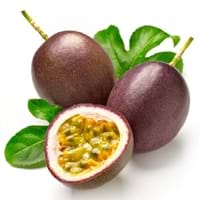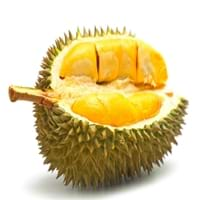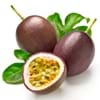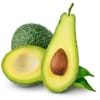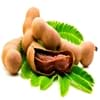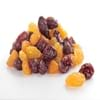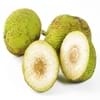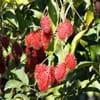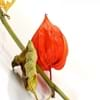Health Benefits
Asthma treatment, Heart care, Regulates Blood Sugar, Muscle pain relief, Reduces nervous tension
Anti depressant, Boosts immune system, Cancer prevention, Heart care, Reduces stress
General Benefits
Boosts immune system, Controls blood pressure, Digestive aid, Fights against infections, Helps in weight loss
Anti oxidant properties, Anti-inflammatory properties, Boosts immune system, Controls blood pressure, Controls blood sugar levels, Digestive aid, Flu treatment, Strengthens bones
Skin Benefits
Anti-aging benefits, Skin revitalization
Anti-aging benefits, Brightens and lightens complexion
Hair Benefits
Protects hair
Promotes longer and healthier hair, Protects hair
Allergy Symptoms
Anaphylaxis, Breathing difficulty, Decrease in blood pressure, Dizziness, Skin rash, Swelling of face, Swelling of mouth, tongue or lips
Diarrhea, Headaches, Hives, Nasal congestion, Red rash, Runny nose, Vomiting
Side Effects
Stressed heart, Nausea, Vomiting, Possibly unsafe during pregnancy
Affects blood glucose levels, Nausea, Stomach pain
Best Time to Eat
As a snack in the late afternoon, Don't consume at night and before bed, Morning time (before lunch), Strictly avoid empty stomach
Along with meal, As a snack in the late afternoon, Don't consume at night and before bed, Morning time (before lunch)
Vitamin B5 (Pantothenic Acid)
Not Available
Vitamin C (Ascorbic Acid)
Vitamin E (Tocopherole)
Not Available
Vitamin K (Phyllochinone)
Not Available
Lutein+Zeaxanthin
Not Available
Calories in Fresh Fruit with Peel
Not Available
Not Available
Calories in Fresh Fruit without Peel
Calories in Frozen Form
Not Available
Calories in Canned Form
Not Available
Calories in Pie
Not Available
Type
Tropical
Tree fruit, Tropical
Season
All seasons
Monsoon
Varieties
Australian Purple, Common Purple, Kapoho Selection, Pratt Hybrid, University Selection No. B-74, Waimanalo Selection and Yee Selection
D24, D99 (Gob kecil), D123 (Chanee), D145 (Beserah), D158 (Gan Yau), D159 (Monthong), D169 (Tok Litok), D188, D189, D190, D163 (Hor Lor) and D164 (Ang Bak)
Color
Purple, Yellow
Green
Inside Color
Yellow
Yellow
Taste
Sweet, Tart
Creamy, Sweet
Origin
Argentina, Brazil, Paraguay
South-Eastern Asia
Grows on
Not Available
Not Available
Soil Type
Sandy loam
Clay
Climatic Conditions
Frost free, Sunny, Warm
Hot, Humid
Facts about
- Passion fruit tree can grow up to 20 feet in a year.
- More than 200 species of passion fruit are found near Amazon river.
- Oil extracted from its seeds is used in various cosmetics.
- 1 kg of durian contains 1350 calories which may cause weight gain.
- It may have a hyperthermic effect on the body, making you feel warmer.
- Study shows that durian has an ability to reduce infertility in men & women.
Top Producer
Brazil
Thailand
Other Countries
Colombia, Ecuador, Indonesia, Kenya, Peru
Indonesia, Malaysia, Philippines
Top Importer
Brazil
China
Top Exporter
Ecuador
Thailand
Botanical Name
Passiflora edulis
Durio zibethinus
Synonym
Passiflora edulis f. edulis or Passiflora edulis f. flavicarpa
Lahia Hassk
Subkingdom
Tracheobionta
Tracheobionta
Division
Magnoliophyta
Magnoliophyta
Class
Magnoliopsida
Magnoliopsida
Subclass
Dillenhidae
Dillenhidae
Order
Malpighiales
Malvales
Family
Passifloraceae
Malvaceae
Species
P. edulis
D. zibethinus
Generic Group
Passion Flower
Not Available
Difference Between Passionfruit and Durian
We might think that Passionfruit and Durian are similar with respect to nutritional value and health benefits. But the nutrient content of both fruits is different. Passionfruit and Durian Facts such as their taste, shape, color, and size are also distinct. The difference between Passionfruit and Durian is explained here.
The amount of calories in 100 gm of fresh Passionfruit and Durian with peel is Not Available and Not Available and the amount of calories without peel is 97.00 kcal and 147.00 kcal respectively. Thus, Passionfruit and Durian belong to and category.These fruits might or might not differ with respect to their scientific classification. The order of Passionfruit and Durian is Malpighiales and Malvales respectively. Passionfruit belongs to Passifloraceae family and Durian belongs to Malvaceae family. Passionfruit belongs to Passiflora genus of P. edulis species and Durian belongs to Durio genus of D. zibethinus species. Beings plants, both fruits belong to Plantae Kingdom.
